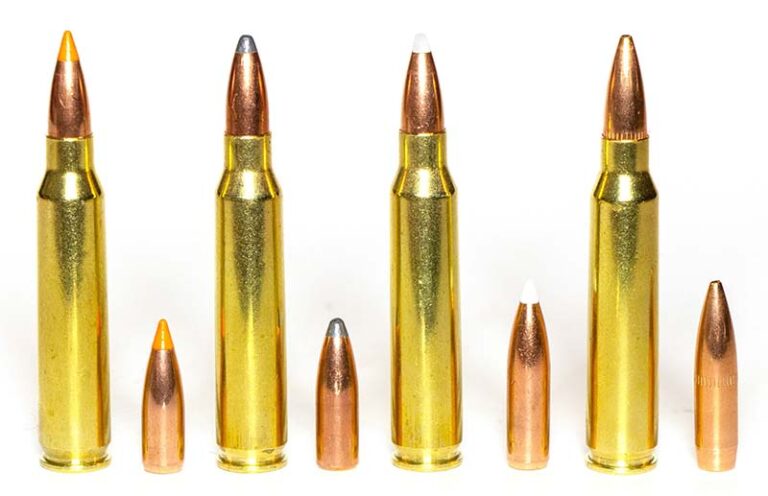
A look at four .223 Remington loads that cover four distinct applications, all using one primer and powder.
The .223 Remington is one of my most used rifle cartridges, and I wanted to develop four loads for it that could be relied upon to do everything I need to do with that chambering. I wanted a load for varmints and small game, another for big game, one for tactical applications and one for precision on paper and steel. But—and here’s the kicker—I wanted to keep it as simple as possible by only using one powder and one primer, and I wanted to do it all with moderate to high velocity and sub-MOA precision.
I began the project by looking over my .223 Remington load notes that go back more than three decades. I also talked with other handloaders, and then I compared reloading data from various manuals. Here’s a look at what I ended up with, and I believe that these four, one-primer/one-powder loads, might very well work for you and your rifles, too.
Brass
I had a lot of .223 Remington brass on hand, but not more than a hundred or so empty cases from the same manufacturer, and I wanted to build these loads with duplicate components. Over the years, I’ve had great success creating consistent loads with Nosler brass, so that’s where I started.

I ordered 500 new cases, and when they arrived, I weighed 100 of them and found the standard deviation to be less than a half-grain. The only case preparation I performed was to slightly chamfer the inside and outside of the case necks. Remember: The goal was to keep it as simple as possible.
Primers
Primers can drastically impact pressure and velocity consistency, and precision. Years ago, working at a ballistic lab with pressure testing equipment, I witnessed the same primer deliver pressure variations of as much as 6,000 psi, while only altering velocity by about 30 fps. More importantly, this resulted in a point-of-impact variation at 100 yards of more than 2 inches.
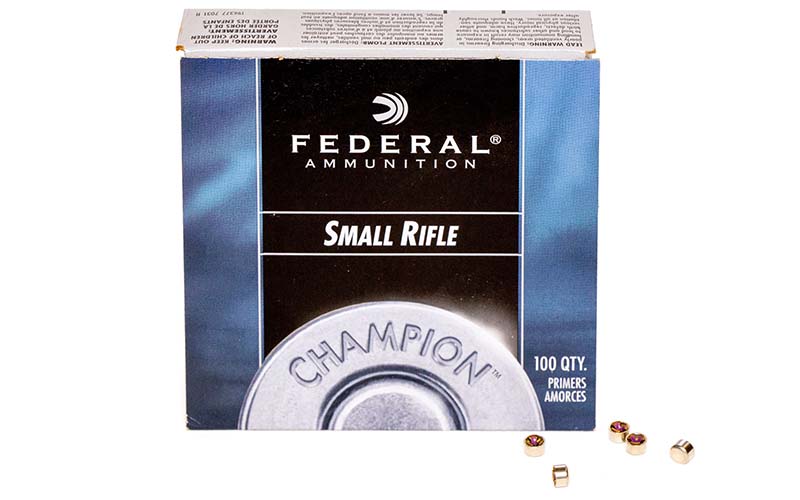
Primers matter a lot more than many shooters think. My notes indicated some of the best loads I have assembled for cartridges that use small rifle primers were put together with Federal small rifle primers. Fortunately, I had 1,000 of those.
Powder
I like powders that meter consistently, especially when loading from a powder dispenser. This generally means ball/spherical powders. If you want to build loads with wide variance in bullet weight, it also means you need a versatile powder. You can consult load manuals, but it’s easier to just visit Hodgdon’s website to plug in the cartridge and the bullet weights you want to use and see what pops up. I did this for the .223 Remington, specifying 50-, 60-, 70- and 77-grain bullets, and eight powders were offered.

Over the years, I had used all but one of these powders in the .223 Remington. That one untested powder was CFE 223. I had heard lots of good things about CFE 223 in the .223 Remington, and though its burn rate is minutely slower than the other seven powders, I took a gamble. CFE stands for “copper fouling eraser” to highlight that the powder has been tweaked to deter copper fouling.
I cannot comment with any supporting definitive proof on how well this works, but my impression is that it does limit copper fouling. During the development of these four loads, which consumed more than 100 rounds, I never once cleaned my rifle’s barrel, and precision only improved throughout the process.
Bullets
This is where diversity with a cartridge happens, and it’s especially true with the .223 Remington, which can be used successfully in so many different applications.
I chose the 50-grain Nosler Ballistic Tip, which is very volatile on small critters.
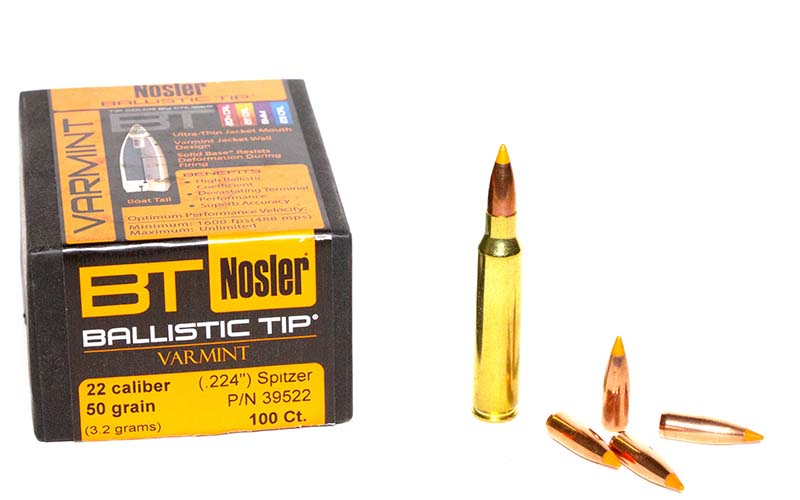
I’ve probably killed more big game with Nosler AccuBonds than any other bullet, so the 70-grain 0.224-caliber version seemed perfect for deer, black bears and hogs.
For tactical applications, many overlook the Nosler Partition, but these bullets do a great job against intermediate barriers.
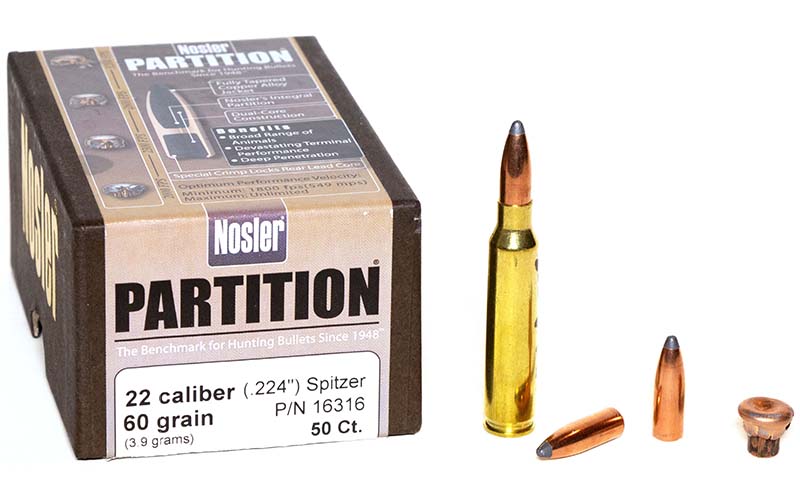
And finally, for paper and steel, I chose the Nosler 77-grain Custom Competition.

The Data
With each load, I started 5 percent below maximum and worked up while watching for high pressure signs and keeping an eye on velocity. Because the chamber and magazine length of my New Ultra Light Arms rifle allows for it, I used a longer than normal overall cartridge length. I stopped when sub-MOA groups and practical velocities were consistent. Though velocity consistency was better with the lighter bullets—in some cases with single-digit standard velocity deviations—the combination of the Federal primer, Nosler Brass and CFE 223 powder was capable of producing excellent on-target precision with all four bullets.

A few things are worth noting. Out of my 22-inch barrel, the 50-grain load did not deliver near advertised velocities for a maximum charge. Also, many claim Nosler Partitions are incapable of extreme precision. However, if you kick up the throttle just a bit, they shoot better. This is especially true—and possible—in a modern bolt-action rifle, because .223 Remington load data is kept right at or below 55,000 psi. The Partition and the other three loads all delivered sub-MOA precision.
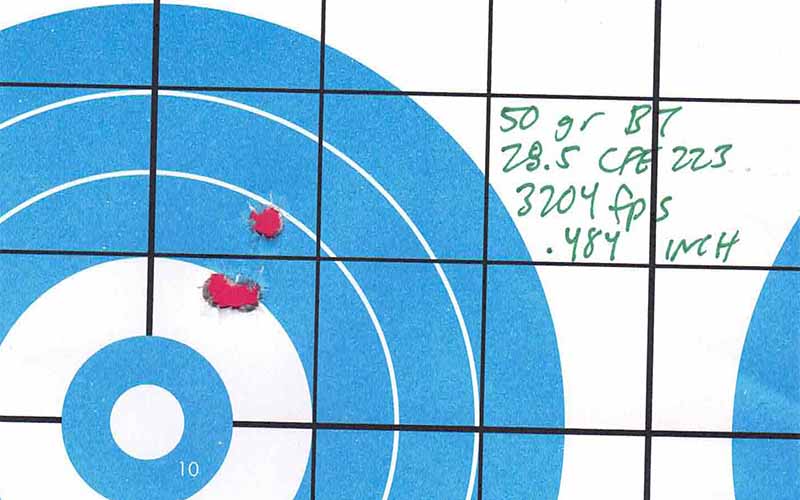
The remaining question was this: Would these four loads also work well in my 5.56 NATO chambered AR-15? I dropped all the loads to slightly below the maximum listed powder charge and reduced their overall length to 2.248 across the board to work with AR-15 magazines. CFE 223 powder does not crowd the case, so seating bullets deeper was a non-issue. Out of that rifle’s 16-inch barrel, which also has a 1:8 twist, velocity consistently was similar, and based on all the AR-15s I have tested over the years, precision on target was better than average … with flawless reliability.
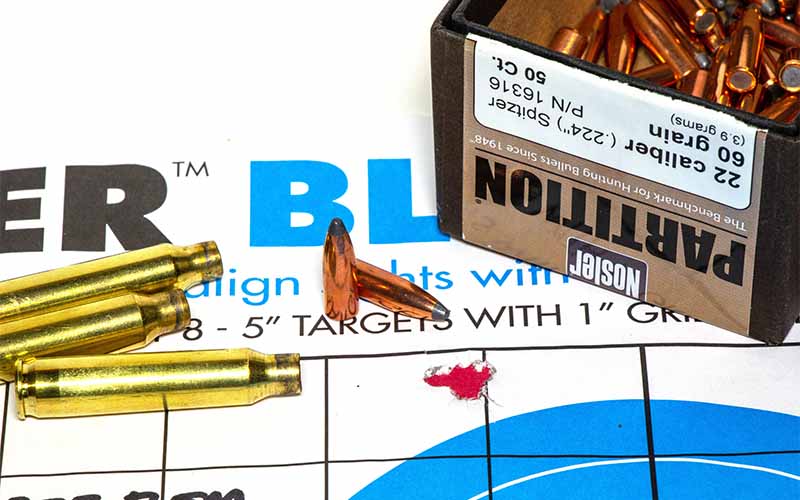
Goals Achieved
Initial terminal performance confirmation was conducted by shooting into blocks of Clear Ballistics. (See table below.) Last spring, I used the Ballistic Tip load to take a turkey gobbler at 239 yards (rifles are legal for turkeys in West Virginia). I also put a doe in the freezer with the Partition load, and a 200-pound whitetail buck on the meat pole with the AccuBond load. Both the Partition and AccuBond bullets will penetrate more than 16 inches and upset to about 1.7 times their original diameter. They are much deadlier on big game than conventional wisdom and most hunters realize.

I do think there is some tweaking to do with the AR-15 loads; I might have left a little velocity in the powder can. But, as they are, and for both of my most-used .223 rifles, this collection of handloads is capable of handling any task I need to tackle with a .223 Remington, and all I need is one powder, one primer and four bullets to do it.
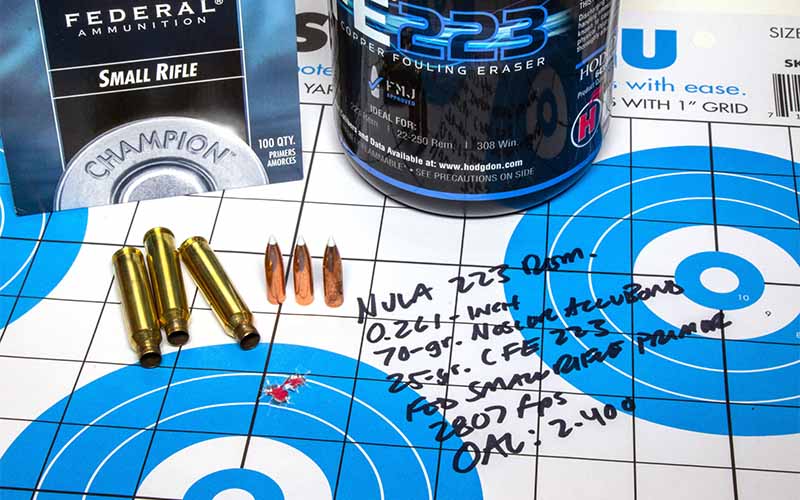
Handloading is an enjoyable pastime that will allow you to create loads not commercially available, while possibly saving a little money. And it’s all much easier to do if you can use a single powder and primer. If you’re looking for a stable of .223 Remington loads that will allow you to extract the most of what the cartridge can offer, these four bullets are a good start, and I suggest you give CFE 223 a shot.
Editor's Note: This article originally appeared in the January 2024 issue of Gun Digest the Magazine.
More On Reloading:
- Tips For Reloading the .30-06 Springfield
- Loving Your Luger: Reloading the 9mm Luger
- Handloading: Tips For Reloading The 7mm Rem Mag
- How To: Tips For Reloading the .223 Remington
- Reloading Bench: The Inside On Reloading For The .30-30 Winchester

Next Step: Get your FREE Printable Target Pack
Enhance your shooting precision with our 62 MOA Targets, perfect for rifles and handguns. Crafted in collaboration with Storm Tactical for accuracy and versatility.
Subscribe to the Gun Digest email newsletter and get your downloadable target pack sent straight to your inbox. Stay updated with the latest firearms info in the industry.

![Best Concealed Carry Guns In 2025 [Field Tested] Wilson Combat EDC X9S 1](https://gundigest.com/wp-content/uploads/Wilson-Combat-EDC-X9S-1-324x160.jpg)


![Best 9mm Carbine: Affordable PCCs [Tested] Ruger Carbine Shooting](https://gundigest.com/wp-content/uploads/Ruger-Carbine-Shooting-100x70.jpg)
![Best AR-15: Top Options Available Today [Field Tested] Harrington and Richardson PSA XM177E2 feature](https://gundigest.com/wp-content/uploads/Harrington-and-Richardson-PSA-XM177E2-feature-100x70.jpg)
